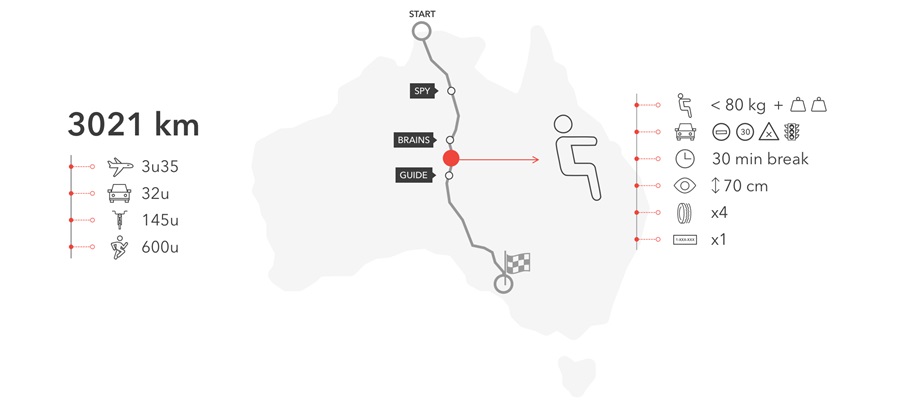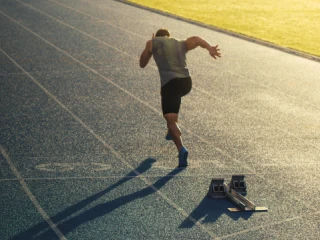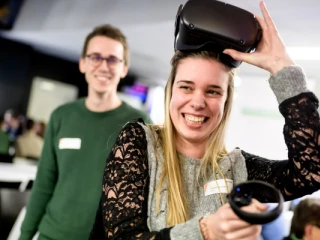1. The route traverses the entire Australian mainland from Darwin in the north to Adelaide in the south, which is exactly 3.021 km! By plane, it would take approximately 3 hours and 35 minutes, while on foot you’d need about 600 hours – a little under a month. Fortunately for the participants, they will drive a fully equipped solar car. From the 13th to the 20th of October, they will cut right through Australia’s Red Center, without a doubt the most beautiful scenic highway, where you can drive for miles without seeing another soul.
2. The whole Agoria Solar Team will travel “down under”, including a professional race pilot. While it’s true the solar car won’t come across many other regular drivers on the road during certain parts of the race, there’s no need to feel lonely. You see, the solar car isn’t the only car that drives the race – a complete convoy of team vehicles will be in front of and behind the car. Every car carries out its own task:
a. the “Brains”: the car that drives directly behind the solar car. It monitors the sensors and energy consumption of the car.
b.the “Guide”: the car in front of the Solar Car, which leads the way and guides the pilot.
c.the “Spy”: the car that tries to listen in on other teams’ communication frequency to discover how fast they are going or which strategy they use.
3. Did you know that there’s also a very specific set of rules all solar cars must comply with? For example, if a race pilot weighs less than 80 kg, extra ballast will be added to make up the difference. On top of that, the eyes of all occupants must be more than 70 cm above the ground. And even though it’s a race, traffic rules do apply to all competitors as they share the road with other drivers. The roads are still open to regular traffic during this race, so no speeding allowed!
/world_solar_challenge-Website-720x360-(1).webp?mode=autocrop&w=320&h=320&attachmenthistoryguid=e286cd42-1849-44b9-a74e-95a52319c556&v=&c=1d85f00be17c1d7665047d4f33a829ef849bb4cf351ce1e231e400d10d09d1f1)

/Agoria_Blog_AI-Website-720x360-(1).webp?mode=autocrop&w=320&h=240&attachmenthistoryguid=defebd28-1966-4111-9244-47378b7d7f88&v=&focusX=310&focusY=76&c=7e2f7620c44c551355ed4190fde4f4375d4176c8bcb8096e28624987dcf6e5ea)
/delaware-del20-dbe-fr-blog-20200403-wide-(1).webp?mode=autocrop&w=320&h=240&attachmenthistoryguid=b6d94ac4-296c-48aa-a3cc-d07e3436c7ed&v=&c=fb3a04341ac2f072dd3534c807b115d053fdcded3400a5ca8dc88e6c14eb24fc)

